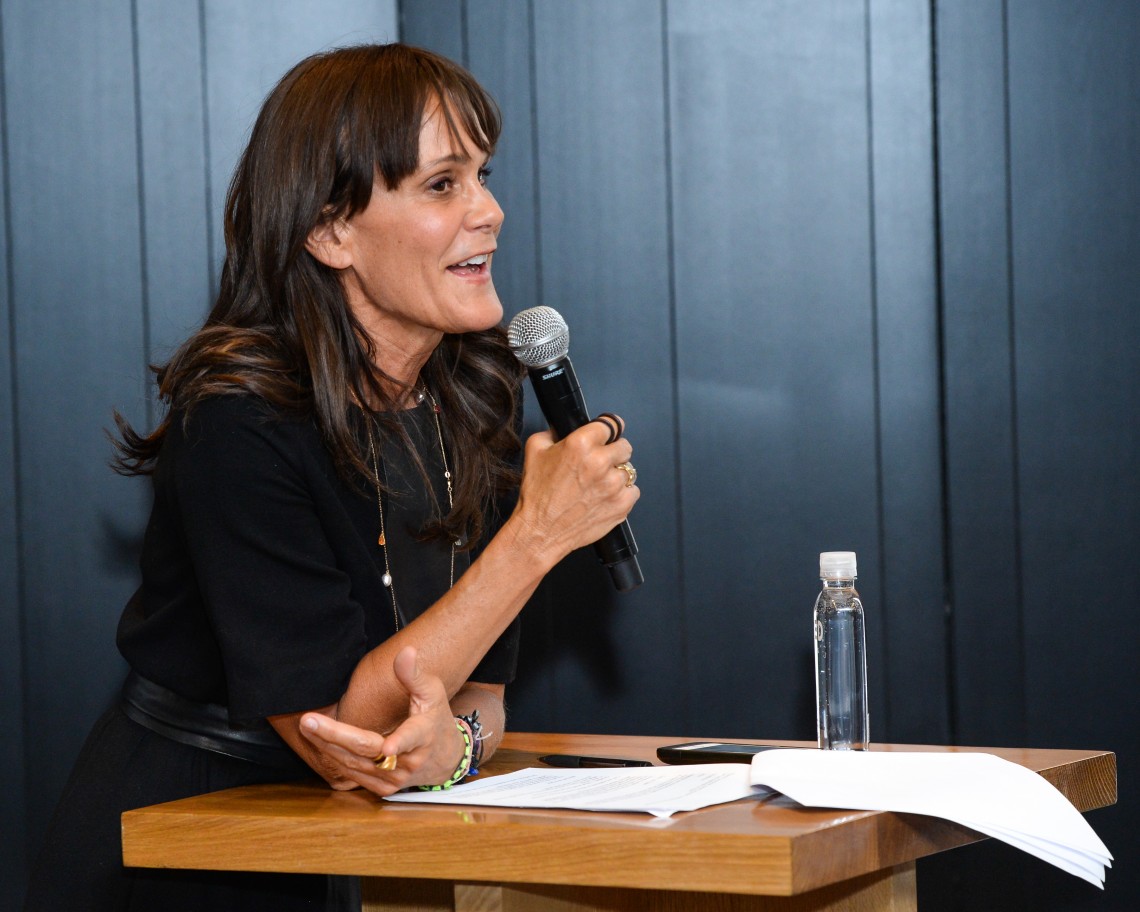Julie Gilhart, the fashion industry veteran and former SVP and Fashion Director at Barneys New York, is credited with nurturing top fashion talent from early on in their careers, among them Alexander Wang, Proenza Schouler and Rick Owens.
With clients such as LVMH Moet Hennessy Louis Vuitton and Amazon.com, one would assume that Gilhart would have little time outside of her creative business consultancy. But Gilhart still dedicates herself to numerous philanthropic efforts, takes an active stand to help grow a more sustainable and responsible fashion industry, and continues her support of the next generation of designers.
Here, Gilhart spoke to CFDA.com about the rising fashion stars of today, the consumer’s role in a sustainable industry, and the importance of social responsibility.
CFDA.com: You have helped discover some of the top emerging and established fashion talent. What have you identified as the common denominators connecting their success?
Julie Gilhart: “I believe that they all have a unique and special energy about them. It’s like they have a special aura. I can recognize it immediately. Of course, this is in conjunction with their ability to create interesting, creative product. I also feel there has to be an incredible amount of drive and persistence. This all being said, I always say a little bit of luck and destiny play into it, too.”
CFDA.com: Dao-Yi Chow and Maxwell Osborne at DKNY; Demna Gvasalia at Balenciaga; Jonathan Anderson at Loewe, and Massimo Giorgetti at Emilio Pucci. Rising-star designers are often inheriting large fashion houses. How have you seen the landscape of emerging talent change over the years?
J.G.: “I think that now you don’t just have to be an incredibly talented designer, but you can also be just as successful by being a creative director, stylist or even curator. This opens a lot more opportunity for younger designers. To have a public- and social-facing designer for a brand is now an incredible asset. This scenario allows a designer to skip steps in their development. I wish we could slow this process down a bit and let our young creative talent develop at a slower rate. I feel we put too much pressure on designers to do everything. I’m really interested to see the designer that is confident enough to say, ‘I’m going to be successful but at my own pace.’ Good examples are Azzedine Alaia, Rick Owens and Dries Van Noten. Also, the word ‘brand’ has always bothered me but I have had to come to terms with it. The romance is in a designer’s ‘collection.’ The word ‘brand’ connotes business, which is not a bad thing, but I feel we also need to rejuvenate more true allure. That’s not to say that there aren’t incredible designers that can still do this and have a big business. Alber Elbaz certainly knows how. So does Karl Lagerfeld.”
CFDA.com: What have been the biggest mistakes you’ve seen from emerging brands as they begin their design careers?
J.G.: “I think the biggest mistake is when designers try to be something that they’re not. They follow instead of lead. Also, not getting caught up in the fashion system. Everyone is always looking for something that’s new and different and will change the way we perceive things.”
CFDA.com: What advice would you give to a designer at any stage of their career that would help them build a more sustainable brand?
J.G.: “Hands down, start to be more consciously responsible in all aspects of their business. Sustainability is not charity or philanthropy. It’s now a very current and relevant subject and those who don’t start to address this will look unfashionable in the future. I think the subject of more responsibility in fashion can be daunting, but every designer should take the time to research what sustainability means to them and create auctions from an authentic place. Research and development is a skill designers know how to do.
Starting with the raw materials to where a collection is produced, it’s important to just start to do something. So many designers get hung up on not doing anything unless they feel 100 percent comfortable but that’s just fear. I think the first action is investigating, inquiring, asking and then creating an action plan that has small doable steps. Once one starts from that place, I promise it becomes easier. The path is so rich in story telling as well!”
CFDA.com: How can fashion consumers change the face of sustainable fashion in the industry?
J.G.: “Consumers have the buying power so if they are wanting and demanding something, that can definitely influence the industry. On the reverse side, they get inspired by fashion and what designers are doing so it goes both ways. It’s very important to give people things that they didn’t know they wanted. In the case of sustainability, the designers who can create desirable and innovative product in a responsible way will be the new stars of the future and consumer favorites.”
CFDA.com: You consult for the Amazon Fashion group, including the CFDA + MyHabit “Give with Style” charity sale, which helps generate funds for the CFDA Foundation. How important is it for a designer to connect with philanthropic initiatives?
J.G.: “It’s essential in today’s world. I think the consumer is getting smart in regards to how they spend their money and who they spend it with. I believe social responsibility gives the consumer reassurance that the brand is investing in something other than their own profits and also allows the consumer to participate in good causes.”



